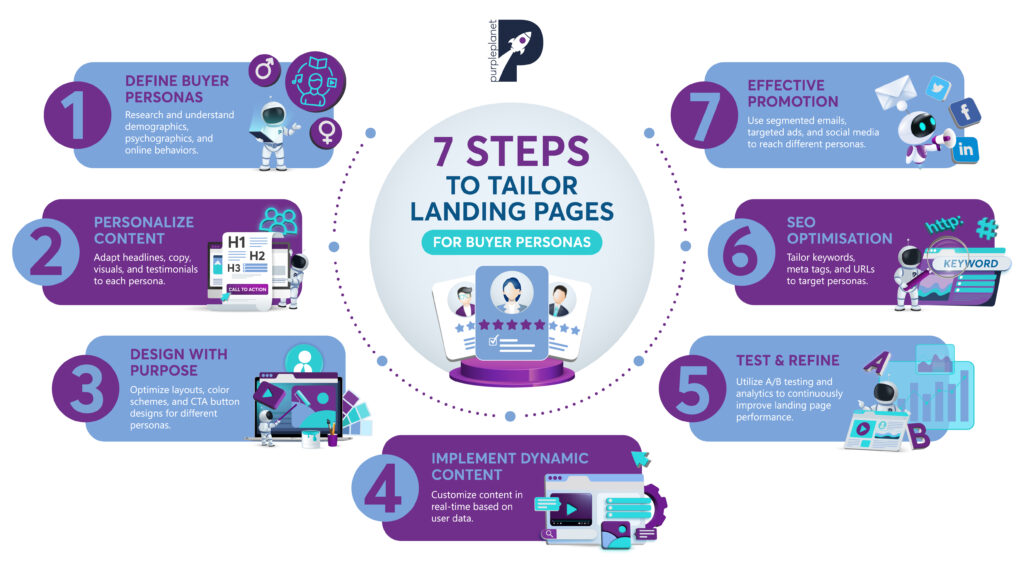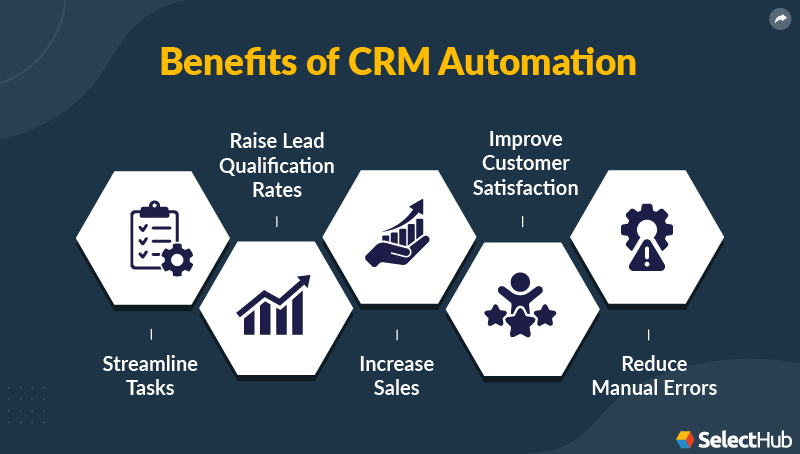I’ve seen many teams make the same mistake — they treat SEO and CRM as two separate engines. You’ve got an SEO team driving tons of qualified traffic to your site and a reliable CRM system nurturing those leads through the sales funnel. On paper, everything looks perfect. But here’s the truth I’ve learned from experience: without connecting these two, you’re leaving money on the table.
When SEO and CRM work in silos, you might attract the right audience but fail to understand what happens after they land on your site. Which keywords bring leads that actually convert? Where do prospects drop off in the journey? These blind spots can quietly kill your growth.
That’s exactly why SEO CRM integration matters. It bridges the gap between visibility and conversion, giving you data that tells the full story. In this guide, I’ll walk you through how to combine the two effectively — so you can finally align your marketing and sales efforts, close more deals, and stay ahead of competitors who are already making the shift.
Understanding the Connection Between SEO and CRM
Search Engine Optimization (SEO) is the process that attracts organic traffic to your website or pages. Whereas Customer Relationship Management (CRM) is a system that helps with managing, optimizing, and, eventually, nurturing these leads to become your long-term, high-value customers. Both are tremendously important for business growth.
In 2025, 91% of companies with 11 or more employees used CRM systems, while the latest data shows that as much as 85% of a site’s traffic is driven by organic search.
Yet, SEO and CRM live in different worlds — or so it seems. SEO is about visibility: getting your content in front of curious people. CRM is about relationships: managing who those people are, what they do, and whether they become customers.
If synchronized, these two can amplify each other’s value. The utility of SEO will increase as more of the traffic it drives converts, thanks to CRM’s ability to turn prospects into customers.
By merging SEO and CRM data, you’ll see not just traffic, but meaningful behavior, unlocking huge potential for your business’s profitability and growth. Thanks to CRM analytics, you’ll begin to understand which pages, topics, and keywords actually drive revenue.
Here is an overview of some other benefits:
- Page analytics: see which pages bring real revenue.
- Keyword research: understand which keywords drive actual buyers.
- Visitor path insights: see the touchpoints on your site that led to conversions.
- Intent patterns: understand which queries correlate with buying decisions.
SEO gives you the audience, CRM gives you the stories behind it. Together, they show what’s happening inside the pipeline and help you manage customer contacts more efficiently.
Connecting SEO with CRM also makes your content investments intelligible. You don’t just see growth in numbers — you see how search powers your business.
Using CRM Insights to Optimize SEO Strategy
CRM systems collect a wealth of useful data about clients. This data is processed and analyzed to produce insights that can optimize not only the internal lead pipeline but also the earlier client attraction and acquisition stages.
That’s the realm of SEO, and that’s how CRM insights can improve your SEO strategy. In practice, CRM for SEO means using client and sales data to guide how you target, write, and optimize content.
1. Identifying High-Value Keywords Based on Lead Data
CRM’s potential to support keyword research often remains untapped. But when paired with strong high-DR dofollow backlinks, your content can gain the authority it needs to rank faster and convert better. However, those few companies that turn client relationship systems into keyword research allies typically see massive efficiency gains.
Here are a few ideas on how to identify high-value keywords based on CRM’s recorded lead data:
- Customer communication records. Your CRM stores notes from calls, emails, and chats. Mining that text shows how customers describe their problems in their own words — gold for SEO keyword discovery.
- Sales data. CRM software tracks which landing pages and which search terms (queries) have brought visitors who converted, as compared to those who simply browse. Analyze and replicate the most successful landings and search terms for a more efficient SEO.
High-performing segments. By categorizing CRM data into the top-converting customer segments (e.g., by industry, demographics, geography, etc.), you can optimize SEO strategy and lead funnel to focus on the best (most profitable) segments.
Pro Tip: To strengthen authority around top-performing keywords, prioritize the backlinks provided by high-DR (80+) dofollow domains. You can find those via competitor analysis, your niche-relevant business directors, or via guest posting and buying contextual links.
2. Tailoring Content and Campaigns to Buyer Personas
A CRM platform keeps lead records sorted by demographics, psychographics (how customers behave and interact in the pipeline), and geographics, among other categories. A simple analysis lets you sort this data into relevant buyer personas — groups of buyers with shared characteristics.
You can then call these buyer personas as you like, but try to match the names with what makes the best sense for your business strategy/corporate language. For example:
- Data-Driven Decision Maker — managers and decision-makers who seek to organize customer data for better proof and measurable ROI.
- Security-Driven Executive — top management (CxO positions) who prioritize security above all, and are willing to pay more for relevant offers.
- Brand Advocate — repeat customers who would recommend your brand to their family and friends and who would vouch for you if required.
The next step is to tailor your content to match the above-mentioned or any other buyer personas you’ll create. Here is the approach you can try:
- Review what content types each persona already interacts with.
- Identify which pain points or goals drive each persona’s actions.
- Adjust tone, message, and design of your content pages to mirror their language.
- Match keyword intent to each persona’s primary challenge.
- Personalize CTAs and offers based on readiness to buy.
Pro Tip: Treat your buyer personas as living organisms, i.e., changing, scaling/shrinking, and evolving. In real life, buyer personas evolve even faster (than living organisms) as a response to the technological revolution, which reshapes how users behave online and what they value.
Want to learn how to tailor your landing page content for different buyer personas? Check out this quick infographic:

Image source: Purpleplanet
3. Measuring SEO ROI Using CRM Metrics
SEO constantly occupies top positions among the most efficient customer acquisition channels. And, unfortunately, many marketers take it for granted and feel too relaxed to actually bother quantifying its efficiency. Perhaps, they don’t even know how to do it?
The important thing is knowing what to measure, i.e., come up with a list of relevant metrics, and, ideally, KPIs, as these are linked directly to your strategic goals and objectives.
The following CRM KPIs should give you a good picture for a start:
- Conversion Rate — allows you to see how many organic leads have actually converted (out of the total organic traffic, and compared to non-organic traffic).
- Customer Acquisition Cost (CAC) — lets you see how much you spend per organic lead.
- Customer Lifetime Value (CLV) — gives you an even more granular view of how much value a given organic customer generates throughout their lifetime with your company.
- Retention Rate — shows how long leads stay active upon becoming customers and leaving your company/business. You can directly compare SEO efficiency with other channels.
Pro Tip: When calculating customer acquisition cost, include all costs involved — content creation, backlinks, tools, and team hours. Oftentimes, marketers calculate only the cost of their work plus content creation, but overlook other expenses.
Setting Up an Effective SEO – CRM Integration Framework
When you look at how SEO CRM combo complements each other, you see two distinct teams, but one story: how someone found you and why they stayed. That’s the frame.
We’ll define the scenes (SEO entry touchpoints) and let the CRM archive the plot. Welcome to data-driven CRM for digital marketing that feels human.
1. Mapping SEO Touchpoints to the CRM Funnel
A customer funnel isn’t a slide; it’s a sequence of choices. Your content should mirror that sequence.
Give each page on your website (social media, or online store) a name based on the customer funnel stage, then let the CRM record results for more efficient SEO client management.
These are some of the standard SEO touchpoints:
- Articles and blog posts that address people’s needs and pain points.
- Solution, comparison, and FAQs pages addressing the doubts and concerns of potential customers.
- Free resources (e.g., calculators or templates) that help you identify which visitors are genuinely interested or ready to buy.
- CTAs that nurture and entice visitors to move forward or convert.
Example: Let’s take these three touchpoints: (1) Content → (2) Application → (3) Kick-off call:
- The visitor reads a piece of content you’ve published (e.g., “How to Integrate AI in Your Business Processes”).
- Inside this content, the visitor finds a link to an AI application developed by your team (e.g., “AI blog writer”).
- The visitor then contacts you to discuss your cooperation.
The last step in this sequence is where the conversion happens. It’s an example of nurturing a lead to become a customer.
The bottom line: When you map SEO touchpoints (like blog posts, landing pages, or calculators) to specific stages of your CRM funnel (awareness, consideration, decision), you’re basically connecting what people read with what they do next.
This enables you to see which content contributes to conversions and build a more efficient SEO and a smarter lead pipeline.
2. Automating Data Sync Between SEO Platforms and CRM Systems
In CRM for SEO integration, we’re not chasing perfect data; we’re chasing useful data. Automations should deliver the few facts that matter.
To keep your systems in sync without drowning in data, focus on a few durable fields that travel smoothly between various CRM software:
- Landing page and intent as first-class contact fields.
- UTM standards baked into every form template.
- Content cluster tags synced from CMS to CRM.
- Meeting and call outcomes posted to one activity line.
Automation should help humans stay human. It means less copying and more listening on calls. It also protects focus and reduces reporting debates. Less clutter that comes out of it makes SEO wins easier to spot — and easier to repeat.

Source: Selecthub
In the end, understanding how CRM and automation work together helps you build a seamless data-driven marketing ecosystem. It helps make your business more resilient to market changes and competitor moves.
Pro Tip: If two data/dashboard fields tell the same story, even from different angles, drop one of them without regrets. The fewer clicks it takes to find meaning, the stronger your automation is.
Unlock Higher Conversions by Connecting SEO and CRM
Despite living at opposite ends of the lead pipeline, the SEO CRM duo can amplify each other’s efficiency. The result is a smarter, i.e., more efficient, pipeline that maximizes your return on investment and gives you more loyal customers with higher lifetime value.
The key points of integration include:
- Keyword-level performance in CRM reports — see which keywords drive higher revenue for a better CRM for digital marketing output.
- Persona-based content targeting — create personalized content for specific buyer personas based on CRM insights.
- Lead source tracking — understand which sources brought you high-performing leads.
- Funnel stage mapping — tag SEO content with relevant funnel stages (e.g., awareness, consideration, decision, etc.) to reveal where visitors drop off, and where they convert.
The key to a successful SEO CRM integration lies in automation. The former lets you establish a steady stream of lead-related data, tracking behavior changes over time, and reporting on the most critical insights to your decision-makers.
Frequently Asked Questions
How do I measure success once SEO and CRM are integrated?
Measure both SEO metrics (organic traffic, keyword ranking, landing-page performance) and CRM metrics (lead conversion rate, CAC, CLV, retention) and trace how organic traffic becomes leads and customers. That way you tie SEO activity directly to business outcomes.
How do I begin implementing SEO CRM integration?
Start by mapping your funnel stages and aligning them with your content and landing pages. Ensure your CRM captures relevant SEO metadata (landing page, UTM parameters, keywords). Then set up data flows between SEO analytics and CRM and orient your teams toward shared goals.
Will this integration only work for large companies or even smaller firms?
No, this strategy is valuable at any scale. Smaller firms can benefit by making smarter keyword/content choices based on real customer data and avoid wasting resources on low-converting traffic. The key is focusing on meaningful data, not sheer volume.
How does segmentation and buyer-persona work in SEO CRM integration?
A CRM offers rich data on leads (demographics, behaviour, pain-points) allowing you to build buyer personas. You then align your SEO content (keywords, tone, offers) to those personas, ensuring your website speaks to their specific needs and intents at different funnel stages.
FREE. All Features. FOREVER!
Try our Forever FREE account with all premium features!





